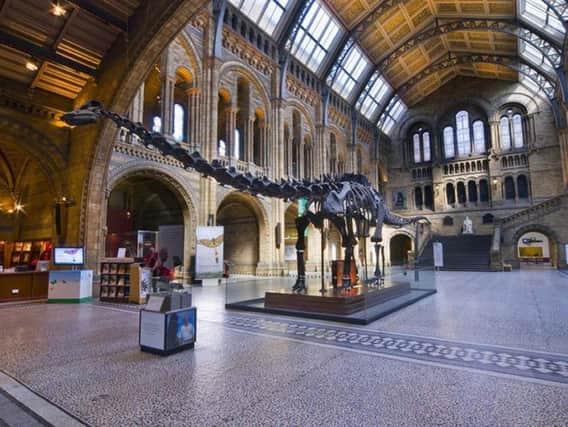World-famous dinosaur Dippy begins its journey to the North East


Dippy the dinosaur, the 26-metre centrepiece at the Natural History Museum in London, will go on display at the Great North Museum: Hancock in Newcastle as part of an exhibition tour.
It is the first time the has not before been publicly displayed outside the museum.
Advertisement
Hide AdAdvertisement
Hide AdHowever, visitors have a bit of a wait yet, as Dippy won't be on display in the North East until next year, when he will go on show between May and October 2019.
The gigantic dinosaur is an example of the Diplodocus carnegii species, which lived between 145 and 156 million years ago.
Standing in the Natural History Museum's entrance hall from 1979 to 2017, Dippy became an icon of London.
The skeleton is a cast made in the early 1900s from an original in Pennsylvania, USA.
Advertisement
Hide AdAdvertisement
Hide AdThe species is named after Andrew Carnegie, the 19th-century industrialist and philanthropist who donated the cast to the Natural History Museum.
In its displayed pose, the skeleton - nicknamed Dippy - is 26m long, 4.3m wide and 4.17m high.
It took three weeks to dismantle the 292 bones, which are made of resin and plaster of Paris.
The three-year tour begins at the Dorset County Museum in Dorchester, Dorset, on the Jurassic Coast, famed for its fossils.
Advertisement
Hide AdAdvertisement
Hide AdThe exhibit will be open to the public from Saturday, with some events for press on Friday.
It will then be shown at museums and cathedrals in Birmingham, Belfast, Glasgow, Cardiff, Rochdale and Norwich, as well as the Great North Museum.
It is estimated that five million people will see the skeleton on its tour.